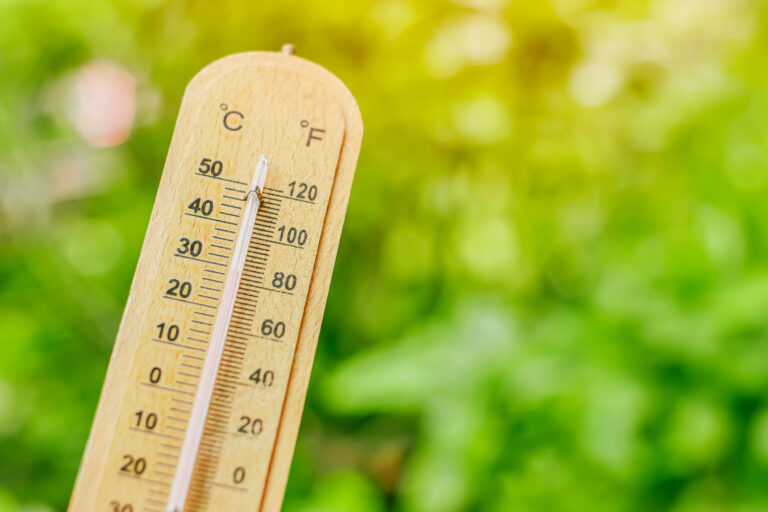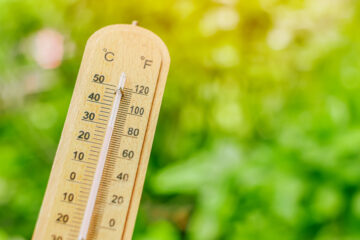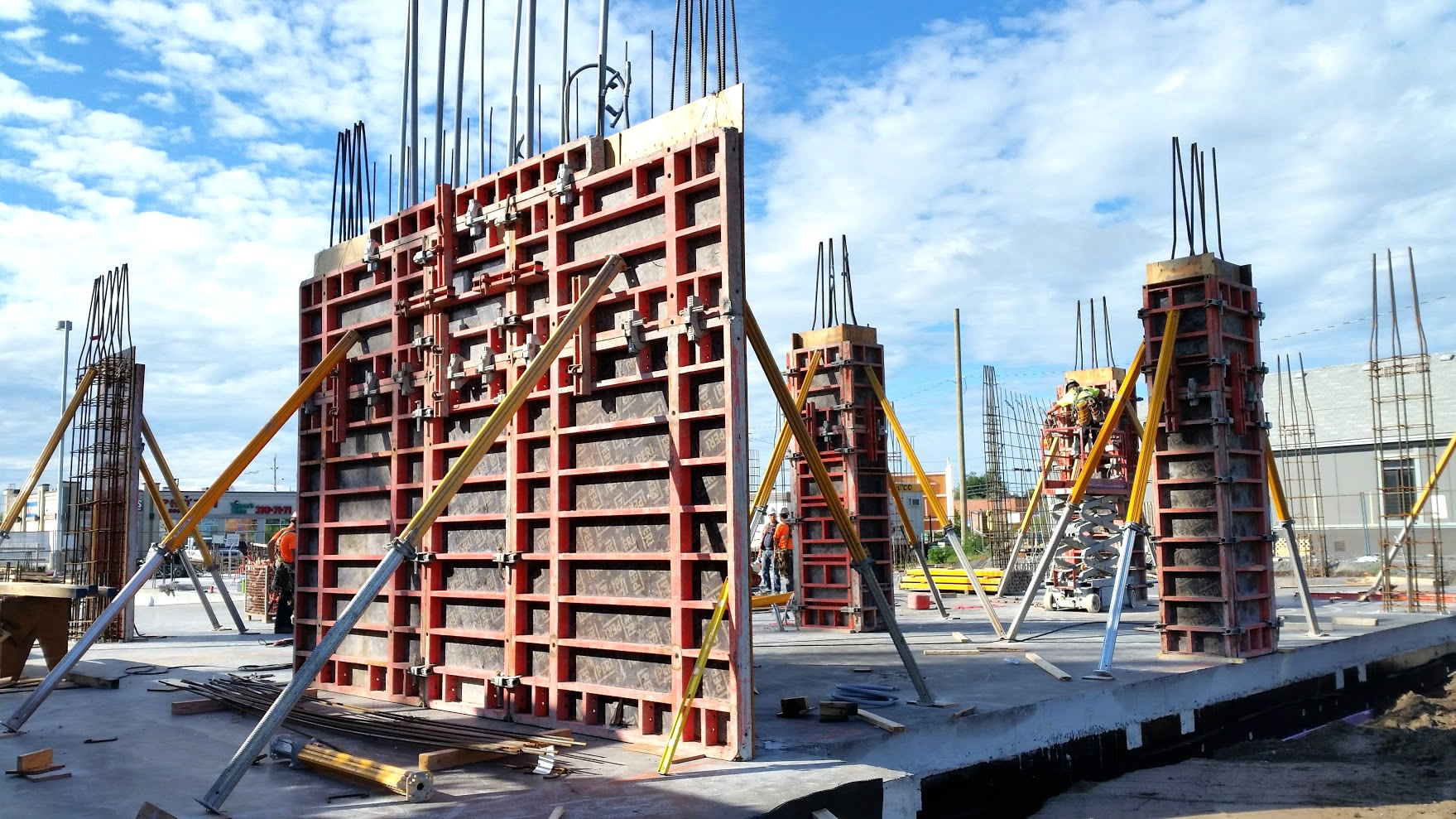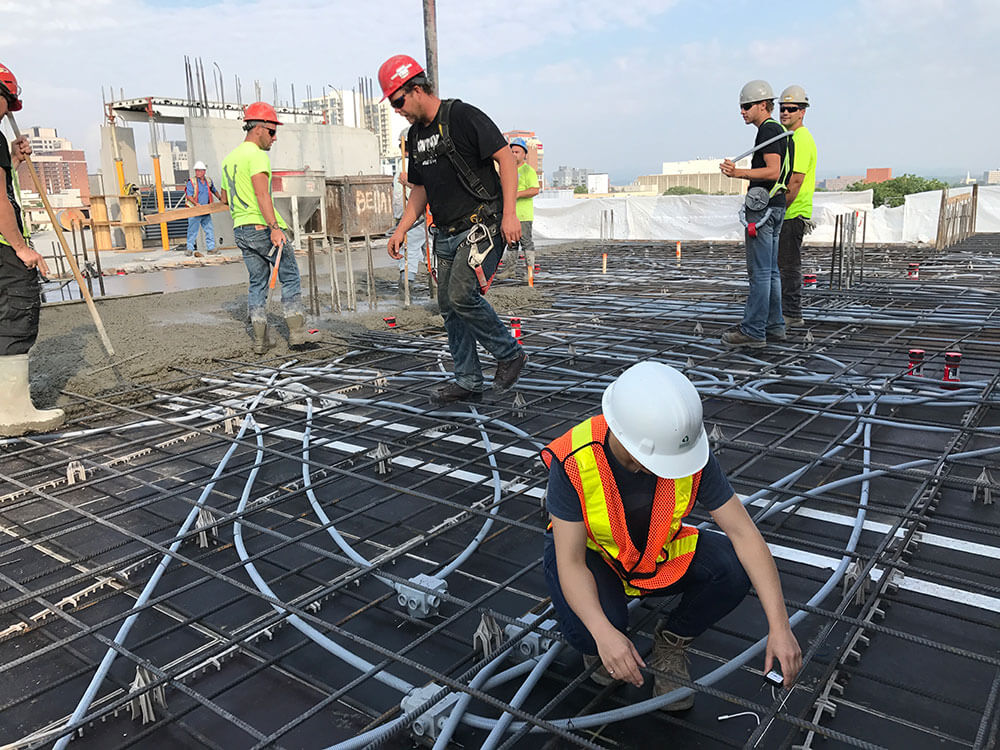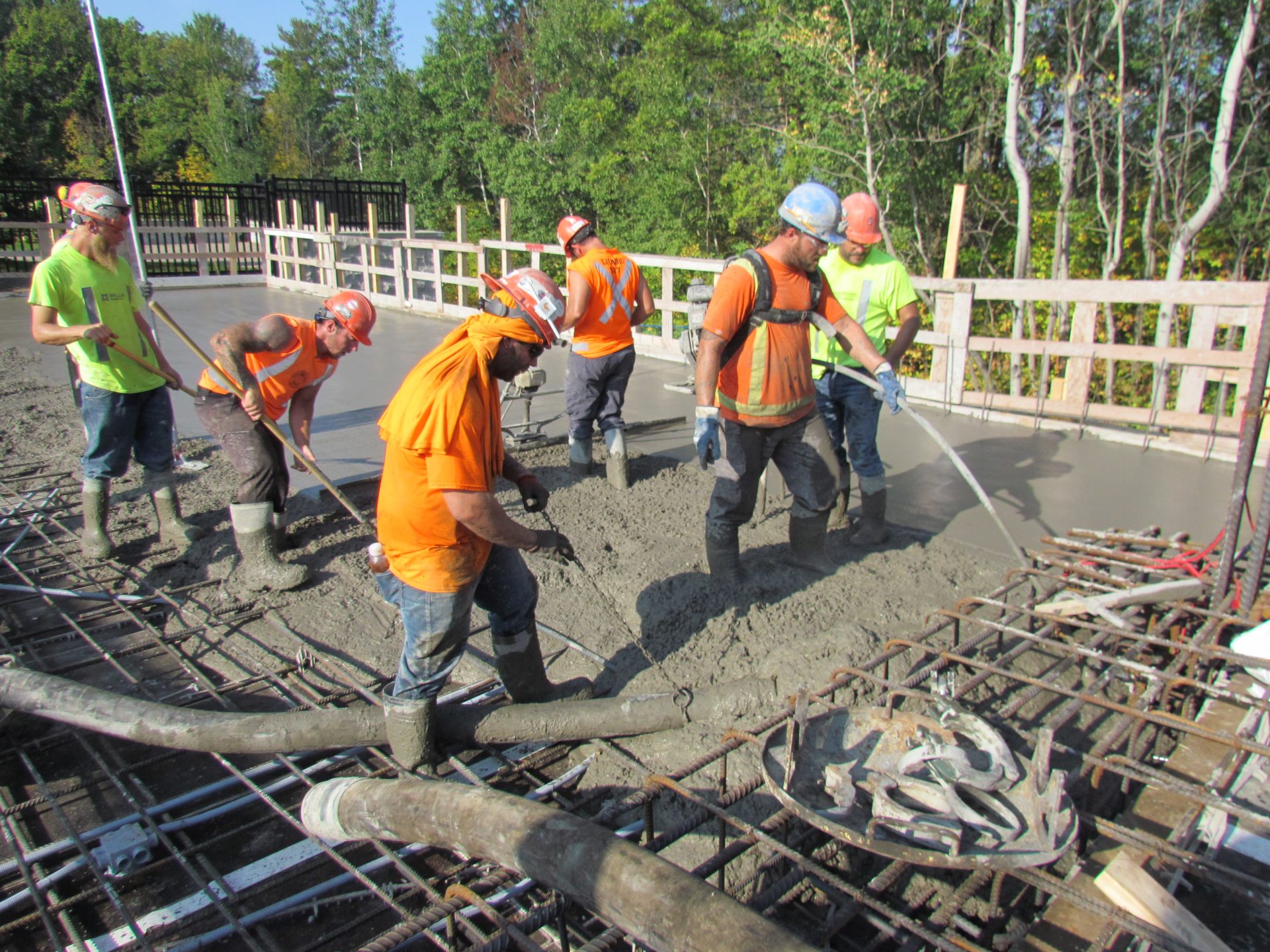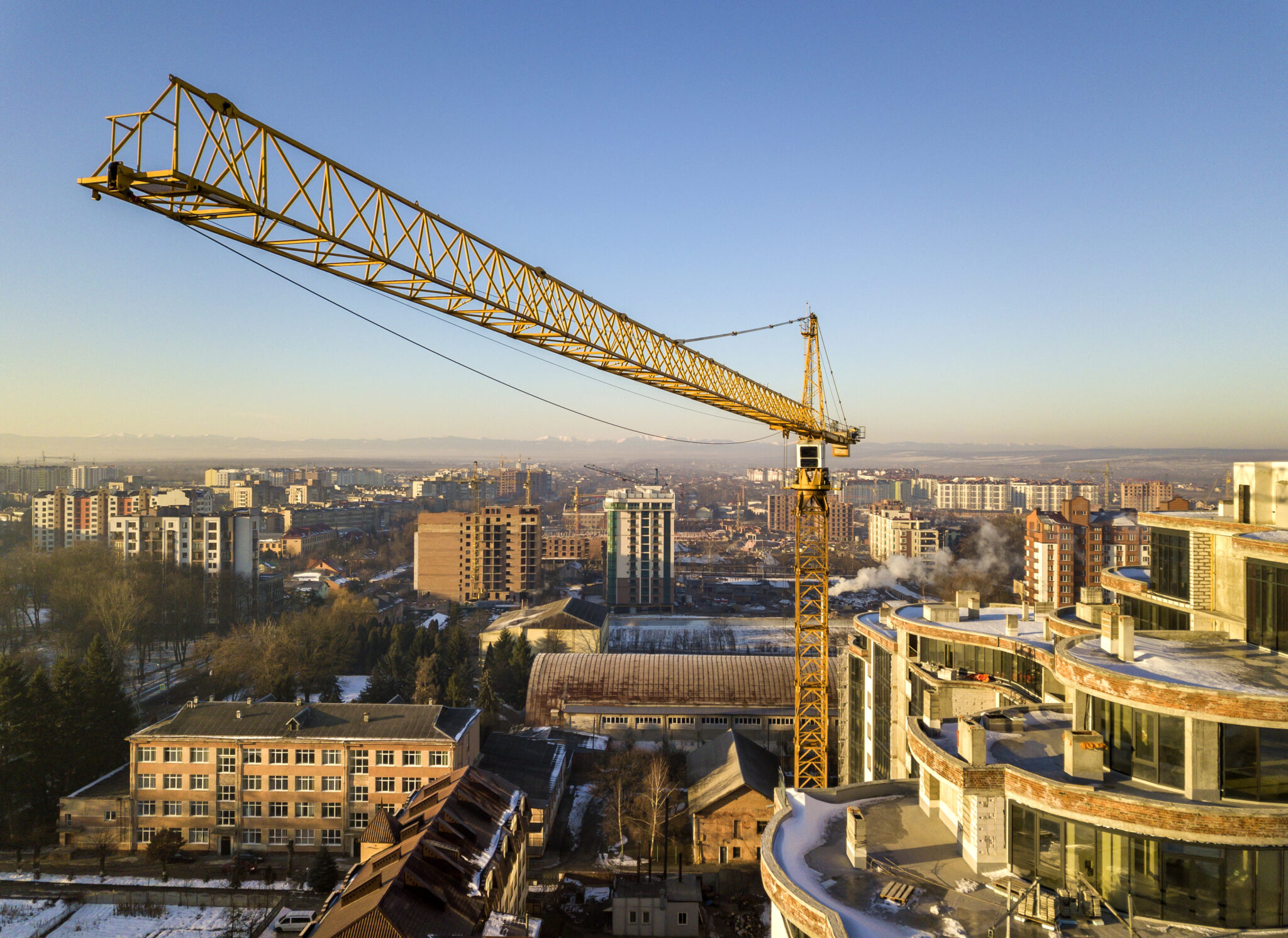Concrete performance—especially at early ages—is highly sensitive to environmental conditions. While ambient temperature is the most recognized factor, wind speed and relative humidity also significantly impact hydration, evaporation, and the risk of plastic shrinkage and cracking. Proactive monitoring of ambient conditions enables both prevention and mitigation, helping contractors and producers maintain durability, avoid costly delays, and reduce quality disputes. In this blog, let’s learn how incorporating environmental data into quality control processes can be beneficial for managing risk and ensuring performance.
SmartRock® Long Range Savings for Big Projects
When to Start Monitoring Ambient Temperature
Monitoring begins at the batch plant, where ambient conditions can impact the temperature and moisture of the raw materials. Understanding the ambient temperature while the concrete is in transit to the job site is also important. Temperature affects slump and workability, especially in hot weather, where elevated ambient temperatures can accelerate setting and cause rapid slump loss. Being aware of forecasts, planning and adjusting mix designs accordingly is essential for delivering concrete within specifications.
It is also very important to keep monitoring the ambient temperature at placement and during early hydration, monitoring of ambient conditions and using prediction tools ensures proper curing and strength development, especially in:
- Hot weather, where surface evaporation can cause plastic shrinkage.
- Mass concrete, managing internal gradient and optimization of protection systems.
- Cold weather, to prevent delayed strength gain and thermal shock.
Solutions like MixPilot™, a non-invasive, wireless hydraulic pressure sensor, can be installed directly on ready-mix trucks to track slump, temperature, and other critical parameters in real time, helping producers adjust mixes proactively and ensure consistency from plant to site. Producer focuses on delivering concrete within spec from plant to jobsite gate, where forecasting and measuring ambient condition in transit, and leveraging tools like MixPilot is crucial for quality control. On the other hand, contractors focus on managing ambient conditions during placement and curing to ensure performance of the concrete is met.
Plastic Shrinkage and How Evaporation Matters
Evaporation rate is driven by ambient temperature, wind speed, relative humidity and concrete surface temperature. According to ACI 305R, the evaporation rate can be approximated by the Menzel-Neville nomograph or with this empirical relationship. An evaporation rate > 1.0 kg/m²/h is generally considered risky, with potential for plastic shrinkage cracking.
Wind and dry air can cause moisture to evaporate quickly from concrete surfaces. Wind blows away the moist air near the surface, speeding up drying, while low humidity increases the difference in moisture levels between the concrete and the air, making water evaporate faster. When humidity drops below 50%, it can stop the surface from curing properly, especially if there is sunlight and wind.
Using predictive tool to analysis ahead of time the pouring conditions, as well as monitoring them during pour and at early ages allow to be proactive and make the desired adjustment on time to prevent any unwanted cracking.
Learn more about how to evaluate concrete cracking. Check out our blog!
Environmental Effects on Concrete Curing
Concrete’s hydration and strength gain are closely tied to the environment in which it is placed. By recognizing how external ambient factors impact concrete, contractors can anticipate risks and take preventive steps during placement and curing.
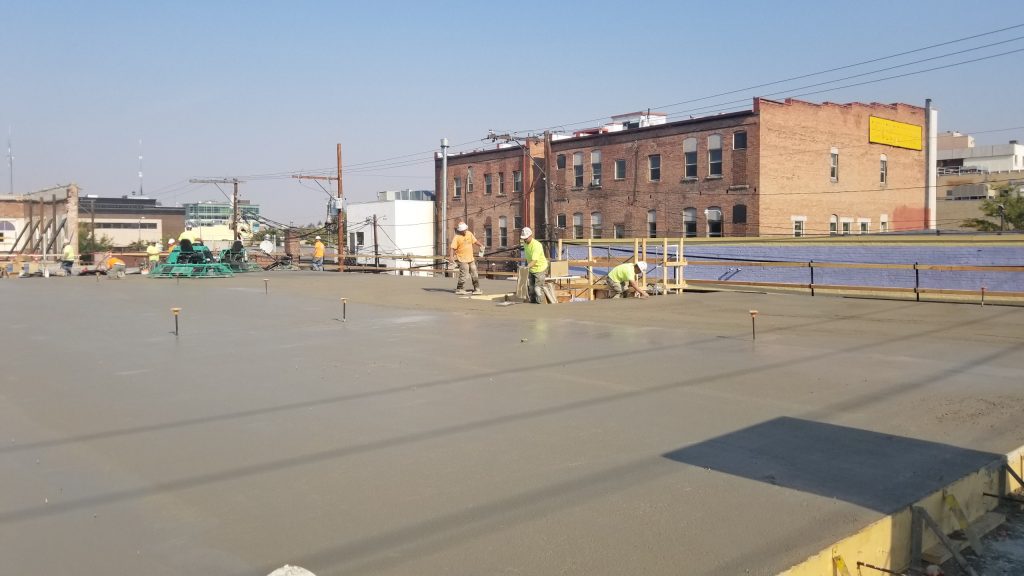
Take a look at the table below to see how concrete is affected by external temperatures and factors:
| Factor | Technical Impact (Hydration & Strength Gain) | Risks |
| High Temp | Accelerated hydration and setting; rapid early strength gain but potential long-term strength reduction due to thermal gradients | Early-age cracking, thermal stress |
| Low Temp | Slowed hydration; delayed setting and strength development; risk of freezing | Strength deficiency, freezing damage |
| High Wind Speed | Increased surface drying; evaporation exceeds bleeding, disrupting curing and surface strength development | Plastic shrinkage cracks |
| Low Humidity | Reduced surface moisture retention; poor curing efficiency; decreased surface strength | Durability loss, poor surface finish |
Environmental conditions play a decisive role in determining whether concrete reaches its designed strength and durability. High or low temperatures, strong winds, and dry air all introduce risks that can compromise curing if not addressed properly. By actively monitoring using SmartRock® sensors and using predictive tools, contractors can protect concrete during its most vulnerable stages, applying the right mitigation strategies ensuring quality outcomes and reducing the likelihood of costly disputes.
SmartRock® Long Range Savings for Big Projects
Risk Reduction Strategies to Ensure Successful Pours
Planning and communication between different parties are the two key elements to ensure successful pours! Knowing the ambient temperature in advance during the different stages of concrete placement and hydration allows one to be proactive and prevent issues by having the right tools in place. Observing the ambient conditions during the operation allows for immediate adjustments to your mix design or deciding when to employ techniques to safeguard your concrete curing process. Here are some strategies you could apply to your next project:
1. Hot Weather (ACI 305R)
Hot temperatures accelerate cement hydration, reduce workability, and increase the risk of early-age cracking and plastic shrinkage. To reduce these risks:
- Cool materials: Chill water, shade aggregates, or use ice or liquid nitrogen to reduce mix temperature before placement.
- Use retarders or stabilizers: Slow the rate of hydration and maintain workable slump during transportation and placement.
- Schedule early or late placements: Place concrete during cooler parts of the day to avoid peak heat and reduce evaporation.
- Apply curing compounds early: Seal moisture as soon as finishing is complete to prevent rapid surface drying.
- In-place temperature and strength monitoring sensors: Tools like SmartRock sensors track temperature and maturity to confirm curing is progressing as expected, even in challenging conditions.
2. Cold Weather (ACI 306R)
Cold temperatures slow hydration and can cause freezing damage, leading to strength deficiencies or surface scaling. Key steps include:
- Warm materials: Heat water, aggregates, or use insulated storage to keep mixes within target temperature.
- Use accelerators: Accelerated set and faster early strength reducing exposure window to freezing.
- Insulate forms or heated enclosures: Maintain a stable environment around the placement area to protect against freezing.
- Maintain curing temperatures: Ensure concrete stays above the minimum recommended temperature for the specified strength.
- In-place temperature and strength monitoring sensors: Real-time data helps confirm that concrete stays within safe curing ranges throughout the process.
3. Wind and Low Humidity
High winds and dry air increase surface evaporation, which can outpace bleeding water and cause plastic shrinkage cracks. To counter these conditions:
- Adjust concrete mix design: Optimize paste content (aggregate gradation), addition of fibers , shrinkage reducing or internal curing admixtures.
- Erect windbreaks: Shield the placement area to reduce direct airflow across the slab or forms.
- Use fogging or humidifiers: Maintain moisture in the air above fresh concrete to slow evaporation.
- Curing compounds: Applied on the surface as soon as finishing allows for locking in moisture and heat.
4. Mass Concrete
Large placements generate significant internal heat, creating thermal gradients that can lead to cracking if unmanaged. Strategies include:
- Implement a Thermal Control Plan (TCP): Model anticipated heat generation, set limits, and plan cooling or insulation needs before the pour.
- Use thermal modeling tools: Estimate internal temperature rise and cooling rates, before and after the pour to inform placement sequence and protection strategies, for the TCP, avoid thermal shock and reduce chance of cracking using cloud-based dashboard platforms like Giatec 360™.
- In-place concrete temperature sensors: Continuous internal monitoring confirms temperatures stay within acceptable limits and helps adjust plans, if necessary, with wireless concrete monitoring sensors like SmartRock®.
By anticipating weather conditions and applying the right strategies—whether cooling materials in summer, insulating forms in winter or managing heat in mass pours—contractors and producers can maintain quality, reduce risk, and ensure every placement meets performance and schedule expectations.
Want to learn how to successfully complete mass concrete pours? Check out our webinar on thermal control plans!
QA/QC: Leveraging Environmental Data for Smarter Decisions
Accurate knowledge of both forecasted and real-time ambient temperature is a critical asset for Quality Assurance/Quality Control teams and general contractors. It enables proactive planning, faster decision-making, and minimizes the risk of non-compliance or quality disputes.
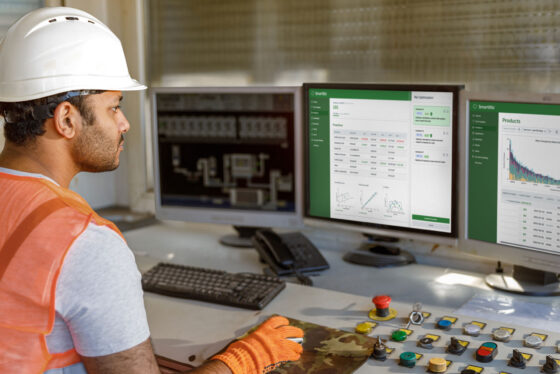
Incorporating environmental monitoring into QA/QC processes strengthens the overall control framework:
- Forecasting Tools
Allow teams to anticipate challenging weather conditions and adjust mix design, scheduling, curing and protection strategies before issues arise.
- Real-Time Alerts & Thresholds
Site-specific sensors can trigger alerts when ambient conditions (e.g., temperature, humidity, wind) exceed safe thresholds, enabling timely interventions for the concrete and across the jobsite.
- Maturity Monitoring Integration
Pairing environmental data with maturity sensors provides a more complete picture of in-place concrete behavior. This ensures that strength development is aligned with expectations and informs key decisions like formwork removal, post-tensioning, and load application.
- Data-Driven Documentation
Logged environmental and strength data support transparency, dispute resolution, and compliance with specifications and codes.
By integrating environmental data into every stage of quality control, teams move from reactive troubleshooting to proactive decision-making. This approach not only improves consistency and compliance but also builds trust with clients and stakeholders by demonstrating control, transparency, and readiness to adapt to changing conditions.
Conclusion
External conditions such as temperature, wind, and humidity are critical in concrete for concrete hydration and can impact quality, durability and strength gain. Nowadays, sensors and data platforms allow for real-time environmental monitoring, prediction and in-place concrete monitoring, providing the essential information for quality control with high-performance, low-risk concrete construction.
Ensure an optimal streamline of the construction process from start to finish. Download our Quality Control Checklist for General Contractors!

